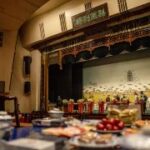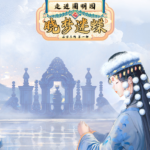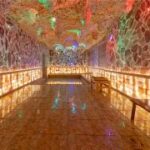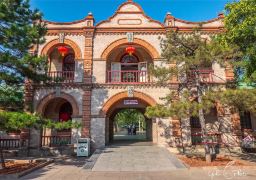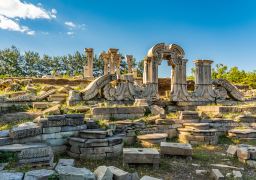The Palace of Heavenly Purity is the main hall among the three main palaces in the inner court and is the exclusive bedroom of the emperor. It was built in the early years of Yongle in the Ming Dynasty. The existing building was rebuilt in the third year of Jiaqing in the Qing Dynasty. ‘Qianqing’ means the purity of the heaven. Fourteen emperors of the Ming Dynasty and two emperors of Shunzhi and Kangxi in the early Qing Dynasty all took the Palace of Heavenly Purity as their bedroom.
They lived here and also handled daily government affairs here. During the Shunzhi and Kangxi periods of the Qing Dynasty, the Palace of Heavenly Purity was closely related to government affairs. The two emperors studied here, read memorials, summoned officials, received foreign envoys, and held inner court ceremonies and family banquets. Although Emperor Yongzheng moved to the Yangxin Palace, he still often came here to select officials and read memorials. Emperors Kangxi and Qianlong of the Qing Dynasty also held banquets for thousands of elders in the Palace of Heavenly Purity. After the emperors of the Ming and Qing Dynasties passed away, they all set up mourning halls here to show that they died in peace. Inside the Palace of Heavenly Purity, there is a plaque with the imperial calligraphy of Emperor Shunzhi of the Qing Dynasty, ‘Great Rectitude and Brightness’. Behind this plaque is hidden the ‘casket for establishing the crown prince in secret’. At that time, the intense open and covert struggles among princes for the throne were quite fierce. In order to ease this contradiction, starting from the Yongzheng reign, the method of secretly establishing the crown prince was adopted. The emperor did not publicly establish the crown prince during his lifetime. Instead, a document establishing the successor to the throne was placed by the emperor’s side; one copy was sealed in the ‘casket for establishing the crown prince in secret’ and placed behind the plaque of ‘Great Rectitude and Brightness’. After the emperor’s death, the regent ministers would jointly take down the ‘casket for establishing the crown prince in secret’ and compare it with the copy secretly kept by the emperor. After verification, the successor to the throne would be announced. Four emperors, Qianlong, Jiaqing, Daoguang, and Xianfeng, ascended the throne according to this system. In the middle of the hall, there is a throne. The ground is paved with gold bricks. There are warm chambers at both ends. There is also a study room on the south side. In history, the young Emperor Kangxi captured Oboi cleverly in the study room on the south side of the Palace of Heavenly Purity, removed a major threat and held the power to govern the country in his own hands. Opening hours: From November 1st to March 31st, open from Tuesday to Sunday, 08:30 – 16:30; From April 1st to October 31st, open from Tuesday to Sunday, 08:30 – 17:00; Closed all day on Mondays throughout the year; Open from 08:30 – 16:30 on New Year’s Day and Spring Festival; Open from 08:30 – 17:00 on Tomb-Sweeping Day, Labor Day, Dragon Boat Festival, Mid-Autumn Festival, and National Day.Palace of Heavenly Purity
The Palace of Heavenly Purity is the main hall among the three main palaces in the inner court and i[...]
